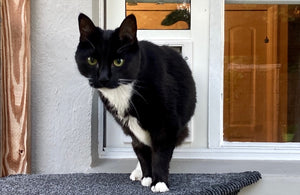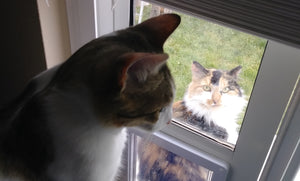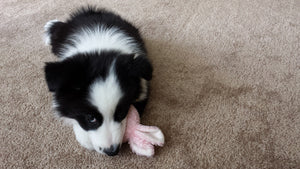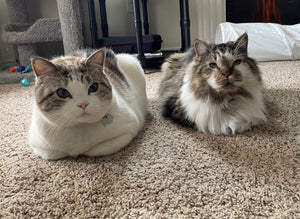How to Potty Train Your Dog
Potty training is one of the most important first steps to take when adopting a new puppy into your family. No one wants their dog to go to the bathroom inside, especially when dog pee can ruin carpets, furniture, and floor. Not to mention, urine can leave a bad smell that can be difficult to remove.
Knowing how to potty train a puppy is an essential skill for any pet owner, whether they’re new or old, but it can be hard to know how to get started.
This guide will go over some of the best tips for teaching your dog to go to the bathroom outside, including:
- How to Get Started House Training Your Puppy
- How to Use a Crate for Potty Training
- How to Use Papers or Puppy Pads for House Training

How to Start House Training Your Puppy
Like any other skill, potty training can take some time to learn, but the most important part is to be consistent.
To start, make sure you take your puppy outside on a leash multiple times a day. You want to make sure they’re only going to the bathroom when they are outside. With young dogs, you can expect to take them out:
- After they wake up in the morning
- Before they go to bed at night
- Once they are done playing
- Once they leave their crate
- After every nap
- After every meal and treat
- After drinking water
Puppies have small bladders, so both liquids and solids will go through them very quickly. When you take them outside, make sure you do it on a leash so that you will know if they have gone to the bathroom or not.
Make sure you give them plenty of time outside to do their business. Dogs will generally want a few minutes to explore and sniff around to get familiar with their surroundings before feeling comfortable enough to go to the bathroom.
Once they do their business, make sure to reward them with plenty of praise to positively reinforce the experience. Doing this consistently will help teach your dog that they’re meant to go to the bathroom outside only.
How to Use a Crate For Potty Training
Introducing your dogs to crates is a great way to provide extra security for your dog. Dogs are den animals, which means that they like having enclosed spaces to rest in when they are tired or stressed. Crates can also help make it easier when your dog needs to travel or go to the vet.
Many pet owners don’t know that crates can be used to help potty train their dogs. Once your dog eats their meals, give them a few minutes before taking them outside on a leash. If they don’t go to the bathroom after a few minutes of exploring, take them inside and let them rest in their crates.
Most puppies don’t want to soil their living space and will let you know that they need to leave their crate to go to the bathroom by whining and scratching the gate. When they do, let them outside immediately! If you wait too long, your puppy might go to the bathroom inside their crate, which teaches them that it’s okay to go to the bathroom in your living space too.

How to Use Papers or Puppy Pads for House Training
While some dog experts believe house training with papers or puppy pads can do more harm than good, it will ultimately help in the long run to keep any messes indoors contained.
Ideally, when house training your dog, it’s better to make sure they know that they can go to the bathroom outside only. With papers or puppy pads by the door, they learn that there is a place inside where they can use the bathroom.
This isn’t ideal and may delay your dog’s house training as they may get confused as to what areas indoors they’re allowed to pee in. However, it is a viable option for those who work long hours and cannot be at their house multiple times a day to let their dog use the bathroom.
If you want to avoid the confusion caused by using paper or puppy pads, a dog door will give your puppy access to the outdoors whenever they are ready to go to the bathroom.
Potty training isn’t easy, but with these tips, you can start the house training process with confidence. Remember that if your puppy gets stuck at any stage to slow down and treat them with patience.
Make sure you also check out these other resources for when you first adopt your puppy:





